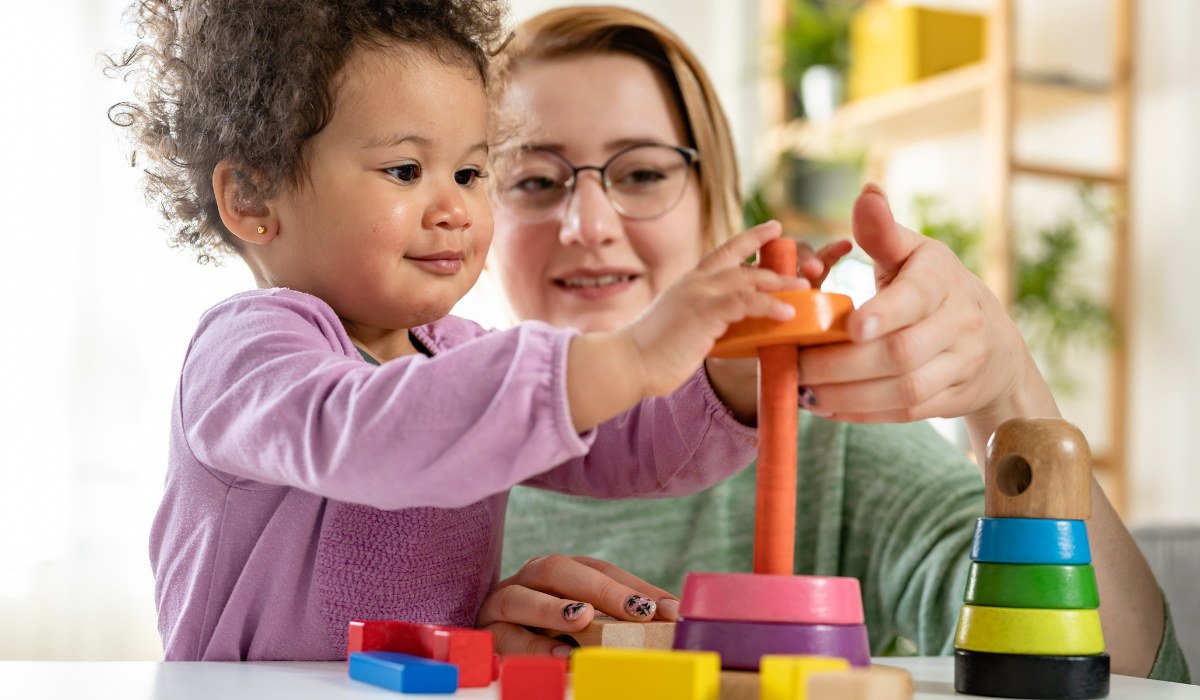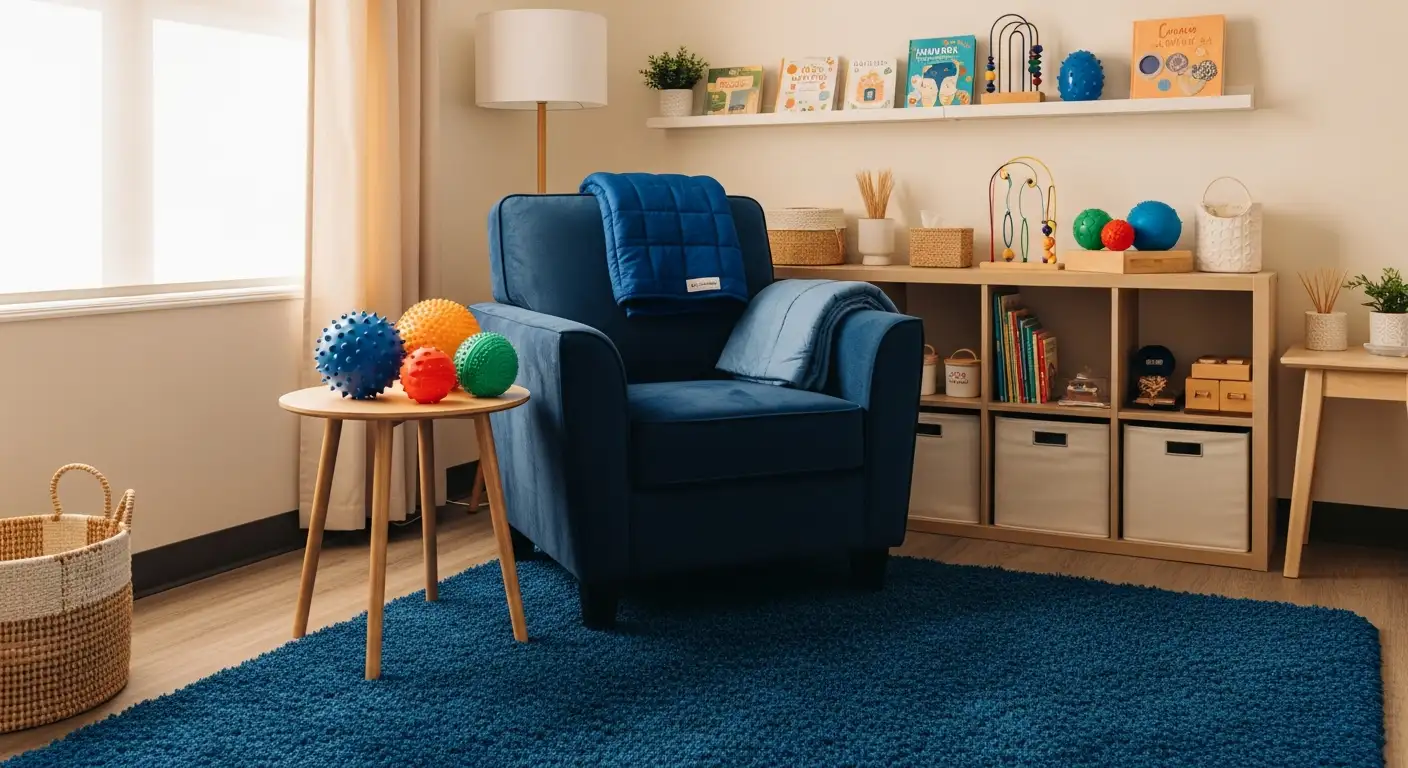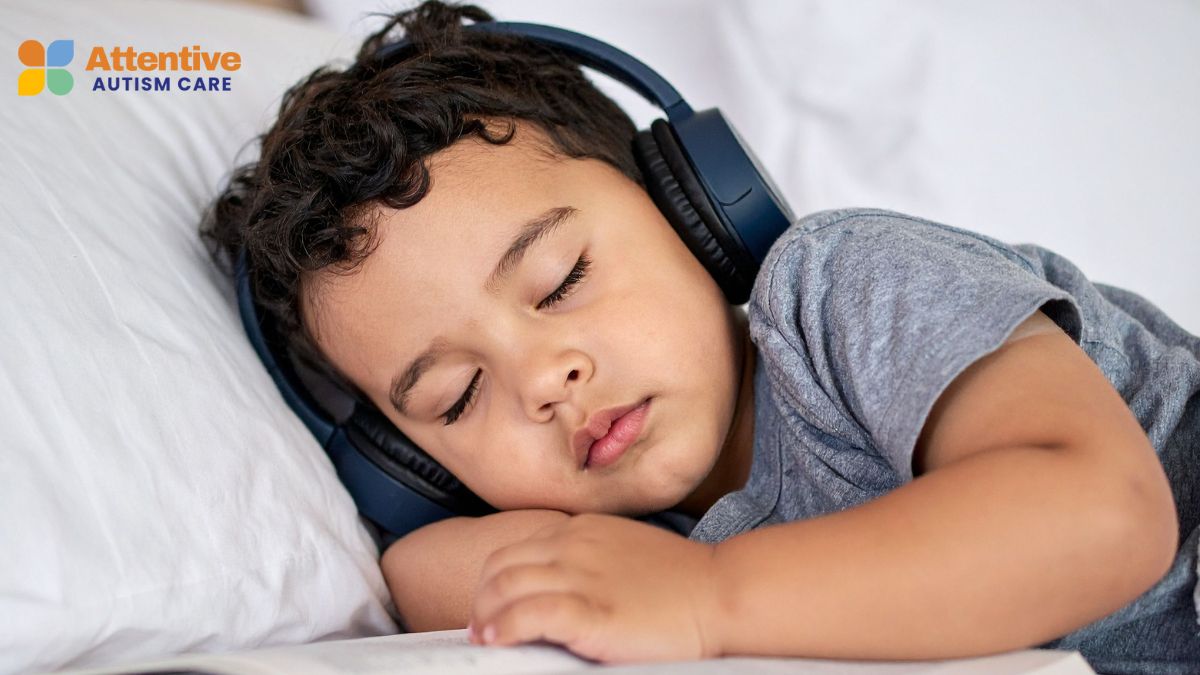The Benefits of Sensory Diets in Autism Care
Transforming Autism Support with Personalized Sensory Strategies

Understanding the Role of Sensory Diets in Autism Care
Sensory diets are personalized plans of activities designed to meet the unique sensory needs of individuals with autism. Developed by occupational therapists, these interventions aim to promote self-regulation, reduce sensory overload, and enhance overall well-being. As a critical component of autism support, sensory diets incorporate activities targeting various sensory systems and can be seamlessly integrated into daily routines, educational settings, and therapeutic practices.
Defining Sensory Diets and Their Objectives
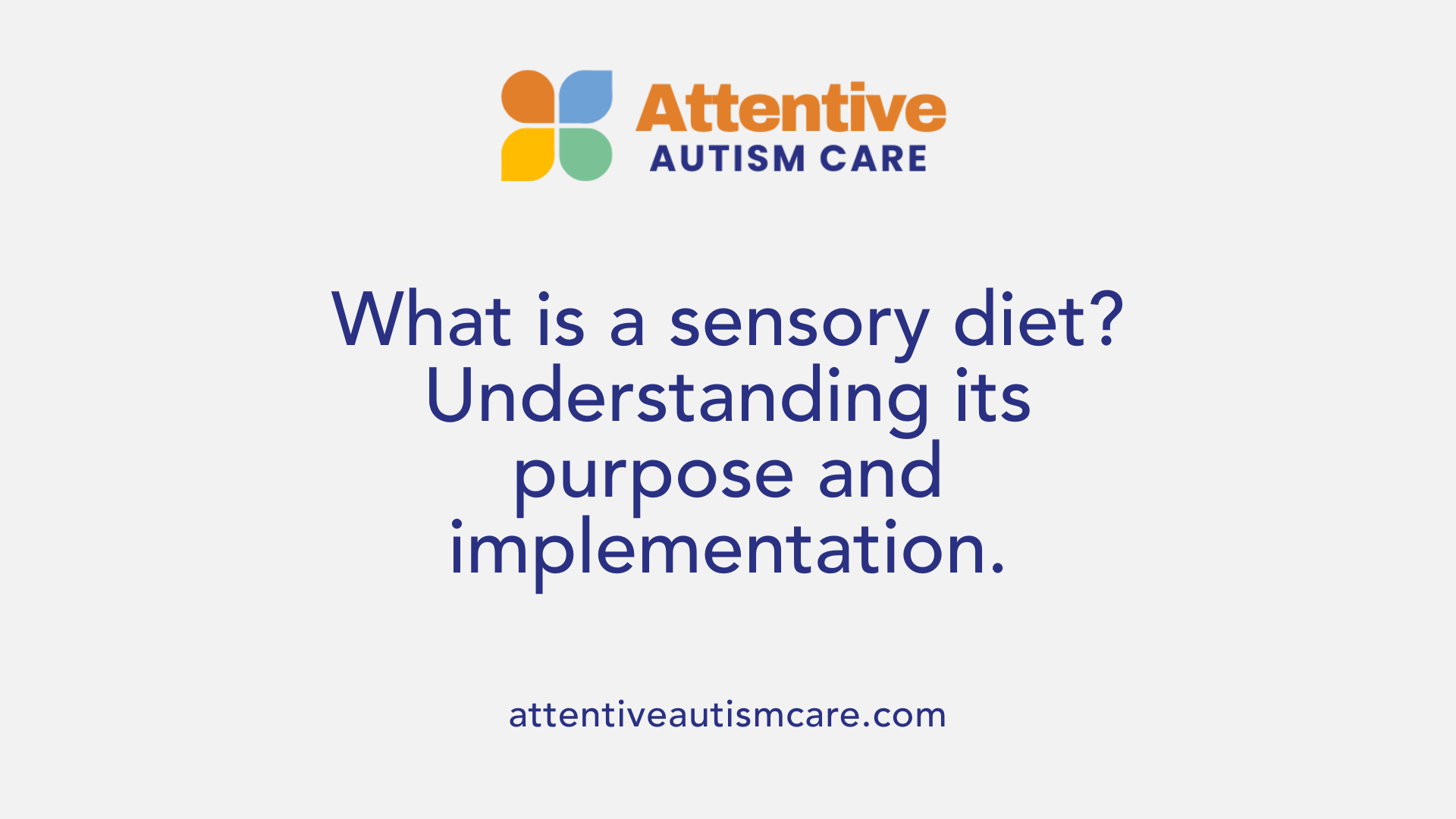
What is a sensory diet for autism and how is it implemented?
A sensory diet is a customized program of activities and environmental adjustments aimed at helping individuals with autism regulate their sensory input. It targets the way the nervous system processes stimuli across all sensory systems—such as touch, sound, movement, and visual input—either stimulating or calming them as needed.
Implementation starts with assessments by occupational therapists to understand each person's unique sensory profile. Based on this, specific activities are selected, like swinging for vestibular input, heavy work tasks for proprioception, or calming scents and visuals. These are scheduled regularly throughout the day to prevent sensory overload or under-stimulation.
Activities could include deep pressure techniques with weighted blankets, movement exercises like crawling or swinging, oral motor activities, vibration, or sensory-based routines incorporated into daily life. Support from therapy professionals and resources such as Bristol Autism Support can help families and schools implement these plans effectively.
Regular engagement in tailored sensory activities helps children stay calm, attentive, and better able to participate in social and educational settings. The goal is to achieve a balanced nervous system, reducing behaviors linked to sensory distress, and enabling improved focus and emotional regulation.
Scientific Evidence Supporting Sensory Diet Interventions

What is the scientific evidence supporting sensory diet interventions in autism care?
Research and clinical evidence indicate that sensory diet strategies can significantly improve how individuals with autism manage sensory information, leading to better regulation, focus, and emotional stability. These interventions are often tailored and guided by occupational therapists, who design plans that include activities targeting different sensory systems such as proprioception (body awareness), vestibular (movement and balance), tactile (touch), auditory, and visual inputs.
Studies and practitioner reports have shown that when sensory diets are consistently implemented, they can reduce anxiety, calm hyperactivity, and improve social interactions and behavior. For example, activities like swinging, deep pressure, or rhythmic movement help regulate the nervous system, supporting children and adults in engaging more productively in daily routines and social settings.
While much of the evidence stems from clinical observations, case studies, and practitioner experiences, there is a growing body of research aiming to validate these effects through more rigorous scientific methods. The results suggest that sensory diets, especially when personalized, are an effective component of autism treatment plans. They enable individuals to reach and maintain optimal states of arousal, which benefits learning, behavior, and overall well-being.
However, it is important to note that current research has limitations, including small sample sizes and methodological inconsistencies. Consequently, further well-designed studies are necessary to conclusively determine the full scope and mechanisms of sensory diet efficacy. Overall, sensory diets are regarded as a helpful tool, especially when integrated with other therapeutic interventions, for promoting better sensory processing and improved quality of life for those with autism.
Managing Sensory Processing Challenges with Sensory Diets

How do sensory diets help manage sensory processing issues in autism?
Sensory diets are personalized plans designed to support individuals with sensory processing difficulties, especially those on the autism spectrum. They include specific activities and accommodations aimed at addressing sensory sensitivities and seeking behaviors. For example, individuals who are hypersensitive might benefit from calming activities like weighted blankets or deep pressure, while those who seek sensory input may respond well to bouncing, swinging, or tactile toys.
These tailored activities assist in regulating the nervous system, helping to reduce sensations of overload or distress. Creating a routine of appropriate sensory inputs enables individuals to remain calmer, more focused, and emotionally stable. Sensory diets also involve environmental modifications such as soft clothing, noise-canceling headphones, or designated quiet spaces to minimize sensory triggers.
Occupational therapists typically develop these plans after assessing the individual’s sensory profile. Implementing a sensory diet at home or school can significantly decrease behavioral outbursts, improve attention, and promote overall well-being. The result is a better capacity for individuals with autism to engage in daily activities and interact more comfortably with their surroundings.
Tools and Activities for Regulation
Effective sensory diets incorporate a variety of tools and activities tailored to different sensory systems, including proprioception, vestibular, tactile, auditory, visual, smell, and taste. Common activities include swinging or rocking to stimulate the vestibular system, deep pressure techniques like squeezing or using weighted items for proprioception, and calming smells like lavender.
Therapists might recommend using visual schedules, sensory bins, or calming music to help organize sensory input. Heavy work activities, such as carrying or pushing objects, and oral motor activities like chewing gum can also be incorporated. These tools not only help individuals self-regulate but also foster independence in managing sensory challenges.
Environmental Modifications
Adjusting the environment is a crucial part of sensory regulation. Small changes, such as installing soft lighting, reducing loud noises, and using calming scents or textures, can make a significant difference. Creating a designated sensory space where a child can retreat when overwhelmed provides an essential safety zone.
In educational settings, sensory-friendly seating, tactile walls, or fidget items can support focus and reduce discomfort. These modifications complement the sensory diet’s activities, creating a consistent sensory-friendly environment that fosters better behavioral and emotional responses.
Tools at a Glance
| Tool or Activity | Sensory System Targeted | Purpose | Example |
|---|---|---|---|
| Weighted blanket | Tactile, proprioception | Calming, deep pressure | Using weighted blankets during quiet time |
| Swing or rocking | Vestibular | Stimulate or regulate movement | Bouncing on a trampoline |
| Fidget toys | Tactile | Focus and attention | Stress balls, textured rings |
| Calming scents | Olfactory | Relaxation | Lavender or chamomile essential oils |
| Visual schedules | Visual | Organization and predictability | Daily routine charts |
| Deep pressure | Touch | Calming sensory input | Squeezing therapy tools |
By combining these tools and environmental approaches, sensory diets effectively support sensory regulation, improving daily functioning and quality of life for individuals with autism.
Implementation Strategies in Educational and Therapeutic Settings
How can sensory diets be incorporated into educational and therapeutic settings?
Integrating sensory diets into everyday school and therapy routines involves designing personalized plans that cater to each child's unique sensory profile. Occupational therapists work closely with teachers and parents to develop these plans, which include a mix of activities aimed at stimulating or calming sensory systems.
Activities such as jumping on a trampoline, swinging, or engaging in heavy work (e.g., carrying objects or climbing) are common. Additionally, tactile play, visual stimuli like calming visuals or schedules, and auditory inputs like music can be incorporated.
Creating sensory-friendly environments fosters better self-regulation. This can involve setting up sensory breaks, using tools such as fidget toys, weighted blankets, or sensory seating. Adjustments to lighting, noise levels, and the arrangement of learning materials also make spaces more accommodating.
Successful implementation relies on a collaborative approach. Occupational therapists are crucial in guiding the development and ongoing adjustment of the sensory diet. Teachers and parents play supportive roles by observing responses and providing consistent activities.
By embedding sensory activities into daily routines—such as during transitions, breaks, or before challenging tasks—children can maintain better focus and emotional balance.
Evidence shows that consistent sensory diet integration improves attention span, reduces anxiety, and promotes social interaction, helping children with sensory processing difficulties thrive academically and socially.
What are the main aspects to consider?
| Aspect | Details | Additional Notes |
|---|---|---|
| Individualization | Plans tailored to personal sensory needs | Based on assessments from OT |
| Activity Selection | Activities stimulating or calming sensory systems | Custom to sensitivities and preferences |
| Environmental Adjustments | Sensory-friendly settings, tools, and routines | Supports self-regulation |
| Collaborative Development | Involving therapists, teachers, and parents | Ensures consistency and relevance |
| Routine Integration | Embedding activities into daily schedules | Promotes routine stability |
In conclusion, incorporating sensory diets into educational and therapeutic settings requires thoughtful planning, personalized activities, and ongoing collaboration. When done effectively, it significantly enhances the learning experience and emotional well-being of children with sensory processing challenges.
Activities Included in Sensory Diets for Autism
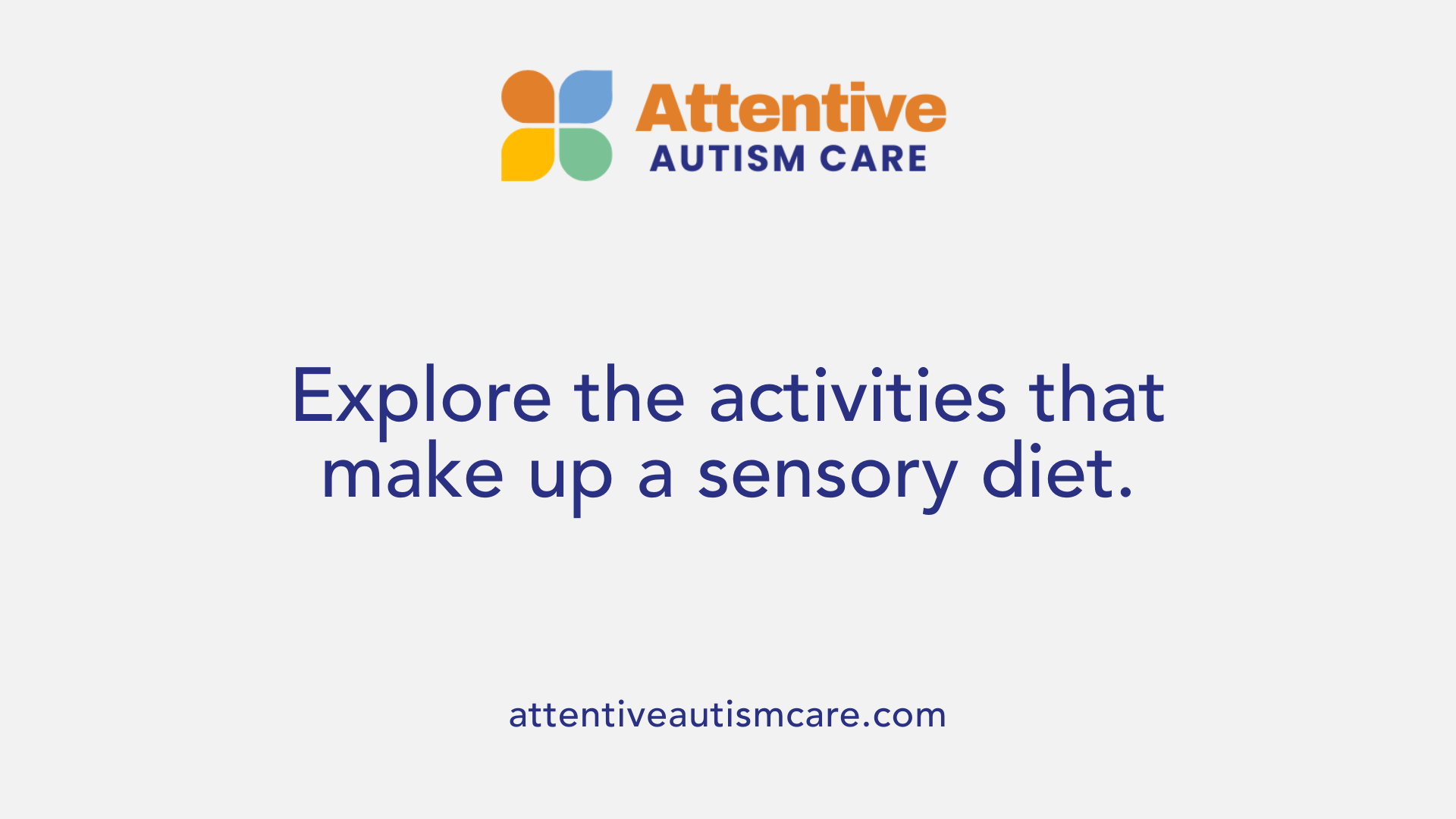
What types of activities are included in sensory diets to support individuals with autism?
Sensory diets encompass a broad range of activities aimed at addressing an individual's unique sensory processing needs. These activities can help regulate arousal levels, prevent sensory overload, and enhance focus and emotional well-being. The core idea is to incorporate sensory-rich experiences that either stimulate or calm the nervous system, depending on what the individual requires.
Activities are carefully selected based on the specific sensory systems involved. For example, some children benefit from vestibular activities like swinging or spinning to improve balance and movement awareness. Tactile activities, such as textured play with different fabrics or sensory bins filled with various materials, help with tactile processing. Proprioceptive activities, including heavy work tasks like carrying or pushing objects, provide input that helps body awareness and regulation.
Other common activities include oral motor exercises, such as chewing or blowing, which support oral sensory regulation. Movement activities like rocking or jumping are frequently used to stimulate vestibular input, while visual and auditory activities, like engaging with visual schedules, light shows, or listening to music, serve to meet those sensory needs.
Examples of specific activities
Here is a list of typical sensory activities integrated into a sensory diet:
| Activity Type | Examples | Purpose |
|---|---|---|
| Vestibular | Swinging, spinning, bouncing | Enhance balance, motion processing |
| Tactile | Textured toys, sensory bins, hand massage | Improve tactile perception |
| Proprioceptive | Carrying, pushing, heavy work | Body awareness, calming |
| Oral motor | Chewing gum, blowing bubbles | Oral regulation |
| Movement | Rocking chairs, trampoline jumps | Sensory input and calming |
| Vibration | Vibration pillows, massage | Tactile stimulation |
| Rhythmic | Singing songs, rhythmic movements | Incorporate pattern and timing |
| Visual | Visual schedules, calming lights | Reduce anxiety, improve understanding |
| Auditory | Listening to soothing sounds, music therapy | Modulate auditory sensitivities |
| Olfactory & Gustatory | Calm scents, flavored snacks | Calm or alert the sensory system |
Personalization and environmental considerations
Creating an effective sensory diet involves tailoring activities to the individual's sensory profile. Occupational therapists and caregivers work together to choose activities that align with the child's specific sensitivities and preferences. They also consider environmental factors, such as creating a calm, sensory-friendly space with adjustable lighting, noise levels, and accessible sensory equipment.
Adjustments are often made based on ongoing observations and assessments. For example, if a child shows signs of overstimulation, the sensory diet can be modified to include more calming activities or sensory breaks. Conversely, if a child exhibits hyposensitivity, more active or stimulating activities can be incorporated to meet their needs.
Incorporating sensory activities into daily routines—be it at home, school, or community settings—helps embed sensory regulation into everyday life, supporting children with autism to stay organized, attentive, and emotionally balanced.
Impact of Sensory Diets on Behavioral and Daily Functioning

What are the benefits of sensory diets for individuals with autism?
Sensory diets provide numerous advantages for children and adults on the autism spectrum. One of the main benefits is improved self-regulation. By offering tailored sensory input, these plans help individuals manage their reactions to environmental stimuli, which can lead to fewer behavioral outbursts and reduced anxiety.
With the appropriate activities, individuals often experience better focus and attention. This enhancement supports learning and allows for more effective participation in daily routines, whether at home, school, or in the community. Sensory diets also foster emotional stability by calming overaroused nervous systems or providing alerting input to boost alertness.
Beyond behavioral benefits, sensory diets can enhance social interaction and motor skills. For example, activities like swinging or carrying heavy objects improve body awareness and coordination, which are vital for social engagement and independence. Over time, these improvements in sensory processing can lead to greater autonomy in daily living skills such as dressing, grooming, and participating in leisure activities.
When crafted by occupational therapists, sensory diets are highly individualized, addressing specific sensory needs. They incorporate various sensory systems, including tactile, vestibular, proprioception, visual, auditory, taste, and smell, offering a comprehensive approach to managing sensory sensitivities. This personalized method supports a child or adult’s ability to function more effectively across different environments, ultimately enhancing their overall quality of life. Thus, sensory diets serve as a valuable tool in promoting behavioral stability, social development, motor coordination, and independence, making daily life more manageable and enriching for individuals with autism.
Summary and Future Perspectives in Sensory Diet Interventions
What is the scientific evidence supporting sensory diet interventions in autism care?
Scientific evidence indicates that sensory diet interventions can significantly improve self-regulation, focus, emotional stability, and social behavior in children and adults with autism spectrum disorder (ASD). When designed and overseen by qualified occupational therapists, these personalized plans include activities aimed at stimulating or calming various sensory systems such as proprioception, vestibular, tactile, auditory, visual, and more.
Many studies and clinical observations have shown that consistent engagement with sensory diets helps individuals process sensory inputs more efficiently, which in turn reduces anxiety and minimizes behavioral challenges. For example, integrating movement-based activities like swinging or heavy work, oral motor activities like chewing, and calming sensory inputs such as soothing scents or visual organization can promote a balanced sensory state.
While the positive effects are well recognized, much of the existing evidence relies on case reports, practitioner experiences, and observational studies. High-quality, large-scale experimental investigations are still limited but are necessary to strengthen the scientific foundation of sensory diet interventions. Nonetheless, sensory diets are widely regarded in autism care as an effective strategy to support attention, reduce sensory overload, and enhance participation in daily activities when personalized to the individual's specific sensory profile.
Challenges and gaps in current evidence
Despite promising outcomes, current research faces challenges such as small sample sizes, variability in intervention protocols, and a lack of standardized outcome measures. These limitations make it difficult to draw definitive conclusions about the efficacy of sensory diets across diverse populations and settings.
Furthermore, there is a need to better understand the optimal frequency, duration, and specific activities within sensory diets that yield the best results. Another gap exists in understanding how sensory diets interact with other therapeutic modalities, like behavioral therapy or medication, and how they can be integrated into comprehensive treatment plans.
Directions for future research and practice
Future research should focus on conducting rigorous randomized controlled trials to establish the efficacy and cost-effectiveness of sensory diet interventions. Developing standardized assessment tools to tailor and accurately measure outcomes will also be crucial.
In practice, it is vital to enhance training for occupational therapists and educators to ensure that sensory diets are effectively personalized and consistently implemented. Leveraging technology, such as wearable sensors and digital monitoring tools, can help track individual responses and adapt interventions in real time.
In summary, while sensory diet interventions are promising and widely used, ongoing research and refinement are essential to validate best practices, optimize outcomes, and integrate these strategies seamlessly into holistic autism care programs.
Embracing Comprehensive Sensory Support
Incorporating sensory diets into autism care represents a holistic approach that addresses core sensory processing challenges, fostering better adaptation, learning, and social engagement. As ongoing research and clinical practices evolve, personalized sensory strategies will continue to play a fundamental role in enhancing the quality of life for individuals with autism, emphasizing the importance of professional guidance and collaborative implementation in all settings.
References
- What is a sensory diet? - Autism Awareness Centre
- Sensory Diet: A Comprehensive Guide to Manage Sensory-Motor ...
- Concept and Use of a Sensory Diet | NFXF
- the importance of a sensory diet for children on the autism spectrum ...
- Introduction - Sensory integration therapy for children with autism ...
- Sensory Diets: An Essential Tool for Children with Autism
- The benefits of sensory integration | Treffert Center - SSM Health












